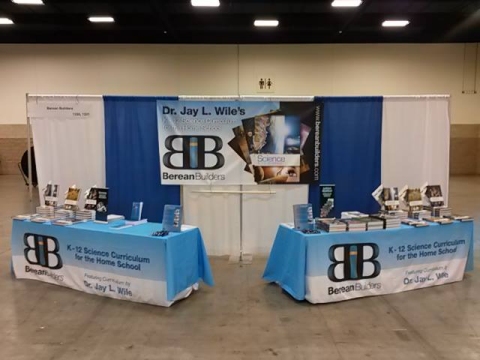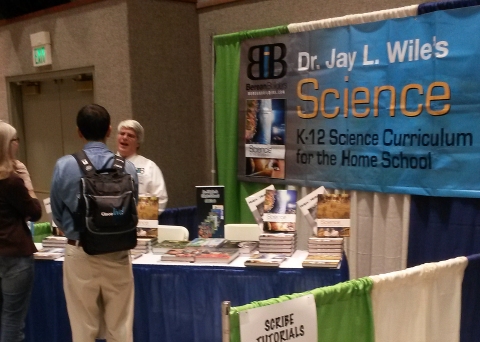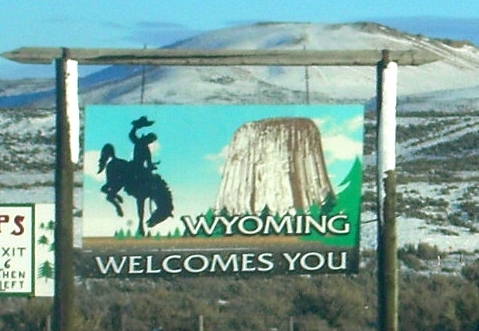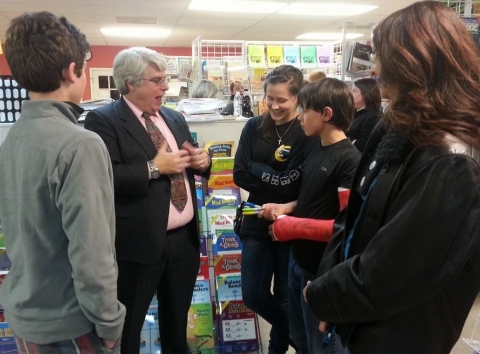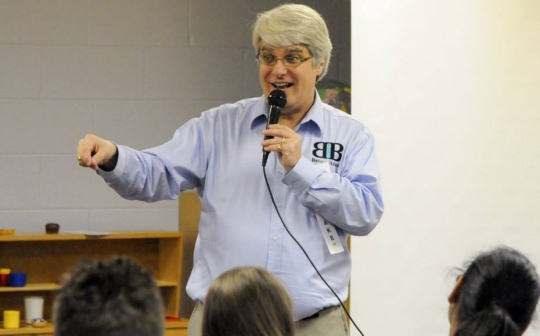
I spoke at another homeschooling convention this past weekend, and I have to say, it was my favorite one in quite a while! There were a lot of factors that went into making it so special. It was the first convention this year where I got to speak alongside Diana Waring, who is an incredible gift to the homeschooling community. Her wisdom and candor is a blessing, and it’s just plain fun when we do talks together. This time, we did one of our classics, Homeschooling: The Environment for Genius, and a new one, Homeschooling: Things We Wish We’d Known. In addition, I gave talks on Homeschooling: The Solution to our Education Problem, ‘Teaching’ Jr. High and High School Science at Home, Teaching Elementary Science Using History as a Guide, and The Creatures and Biological Structures Evolutionists Don’t Talk About.
However, my favorite session of the year so far wasn’t a talk at all. It was a question/answer session. I will discuss that in a moment, but first, I guess I need to “toot my own horn” for a moment. For whatever reason, I got a lot more feedback than usual from homeschooling parents and students at this convention, and some of it was amazing. It all started with the speaker coordinator for the convention. She said that at a convention about 10 years ago, her son (who was in high school at the time) asked me a question. He wanted to be a medical doctor, but he also loved ballet. Well, he had a choice between participating in an exclusive ballet event or doing a science camp. He asked what he should do. I guess I surprised him with my answer, because I told him that he should definitely participate in the ballet event.
Why would I tell an aspiring doctor to do a ballet event rather than a science camp? There are at least three reasons. First, as I understood it, it was an honor to be asked to participate in the ballet event, while the science camp was something anyone could do. Second, I encourage students to be as well-rounded as possible, and if he really enjoyed ballet, he should make the time for it, despite the fact that it wasn’t directly related to his career. Third, and most important, getting into medical school is incredibly difficult. There are lots and lots of applicants who have done all sorts of science camps. However, there aren’t lots and lots who are accomplished ballet artists. If he continued with ballet and did things like the event he described to me, it would make him stand out as an applicant.
The mother told me that her son happily took my advice. He participated in the ballet event and continued to pursue ballet in college, even though he was a premed major. Not only did he get accepted into medical school on his first attempt (an accomplishment in and of itself), he was awarded a sizable scholarship! She and her son are convinced that those accomplishments were a direct result of taking my advice. I immediately told her that her son’s talent and hard work were the primary reasons for his accomplishments, but I am happy my advice was helpful to him. For any of my readers who are thinking of becoming medical doctors, it’s worth considering this young man’s path to medical school.
I will limit myself to two other examples of the feedback I received. The second came from a homeschooling mother who told me that her daughter had taken my high-school biology course, Exploring Creation with Biology. She then enrolled in a college biology class while she was still in high school. She ended up getting the highest grade in the class, despite the fact that she was the youngest student there. After that, the department hired her to tutor her fellow students in biology! I have heard some version of this story many times, and it just further confirms how utterly wrong Bill Nye is when he says that children who are taught creationism “…will never feel the joy of discovery that science brings.”
Continue reading “The 2015 Greater St.Louis Area Home Educators Expo”

